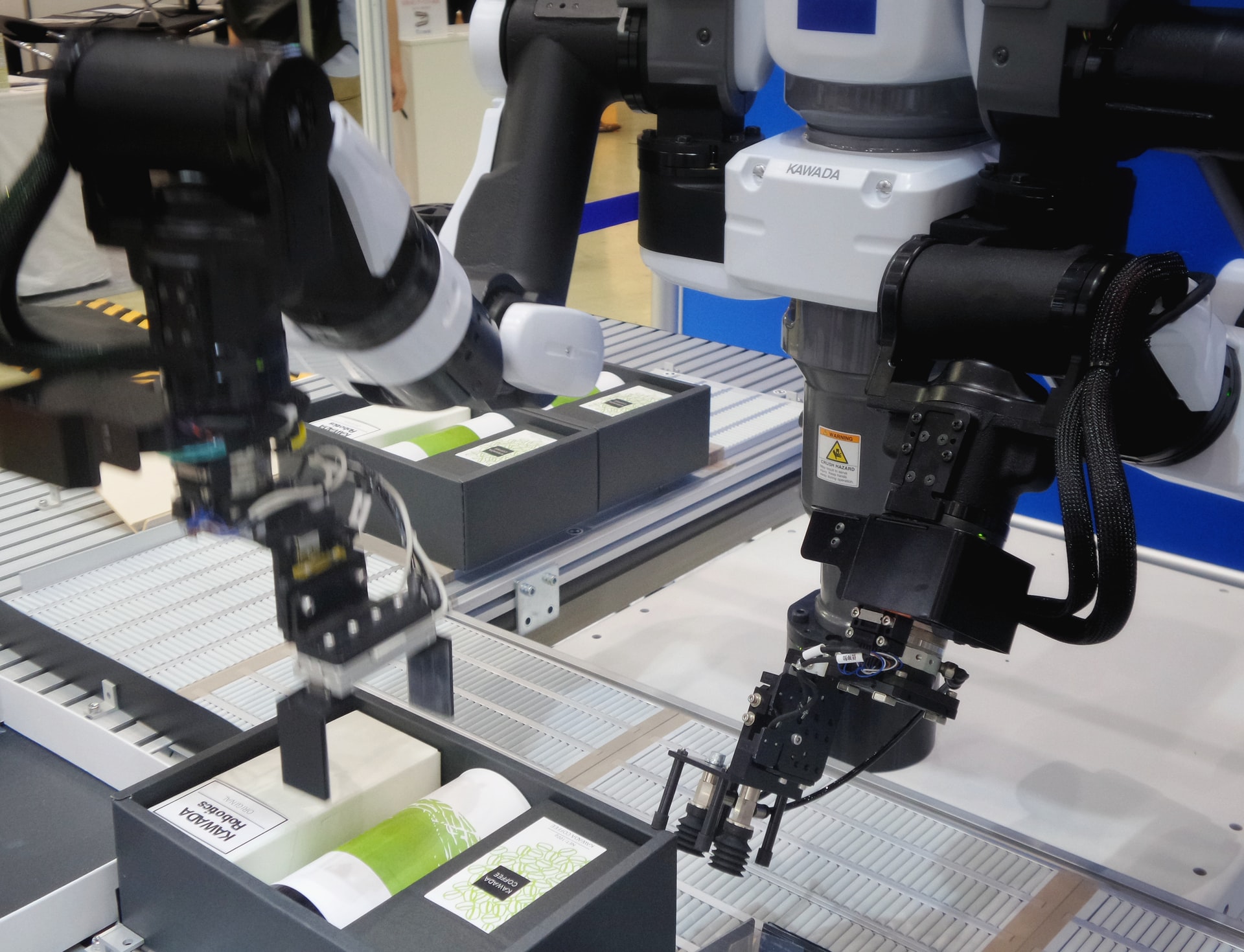Internet of Things (IoT) is a term for the ever-growing network of physical objects that are connected to the internet. These objects can include anything from home appliances to industrial machines.
The IoT has revolutionized manufacturing by allowing companies to connect their machines and devices to the internet, thus giving them the ability to collect and analyze data in real-time.
This data can be used to improve manufacturing processes, optimize production lines, and reduce downtime, among other things.
The benefits of IoT in manufacturing are vast and varied. Here are just a few ways that IoT can improve your manufacturing operations:
1. Increased Efficiency
IoT can help you increase the efficiency of your manufacturing operations in a number of ways.
For example, you can use IoT-connected sensors to monitor the performance of your machines in real-time. This information can be used to make changes to the production process in order to improve efficiency.
Additionally, IoT can be used to automatically reorder supplies when they run low, which can help to avoid production disruptions due to shortages.
What this means for you is that you can expect increased profits and a higher level of customer satisfaction thanks to the increased efficiency that the IoT provides.
2. Reduced Downtime
IoT-connected machines can self-diagnose problems and alert you to potential issues before they cause downtime. This information can be used to proactively fix problems before they occur, or at least plan for downtime so that it has minimal impact on production.
In addition, the data collected by IoT-connected machines can be used to improve the overall reliability of your manufacturing operation. Not only does this improve the quality of your entire operation, but it also gives a sense of security to both you and your employees.
When you can rely on the IoT to make the calculations for you, you know exactly what to expect and can make accurate plans for the future.
3. Improved Quality
The data collected by IoT-connected devices can be used to improve the quality of your products.
For example, if you notice that a particular batch of products is not up to your usual standards, you can use the data to determine what went wrong and make changes to the production process to avoid future quality issues.
As well as that, IoT can be used to implement Quality Assurance (QA) processes that automatically check products for defects and alert you if any are found.
In the long run, this means you’ll be staying ahead of the competition by continually meeting your customers’ demands before they even make them.
4. Greater Flexibility
IoT can help you increase the flexibility of your manufacturing operation. For example, if you need to make a change to your production process, you can use the data collected by IoT-connected devices to quickly and easily determine the best way to implement the change.
Additionally, if you need to add or remove a product from your lineup, the IoT can help you make the necessary changes to your manufacturing operation without disrupting production. This can make your operation more consistent and remove the need for downtime while making changes.
5. Increased Safety
The IoT can help you increase the safety of your manufacturing operation in a number of ways. For example, you can use IoT-connected sensors to monitor hazardous materials and alert you if there is a leak.
Additionally, the data collected by IoT-connected devices can be used to improve safety procedures and identify potential hazards.
When it comes to employee safety, the IoT can be used to monitor employee behavior and alert you if someone is working in an unsafe manner. Let’s not forget that IoT-connected devices can be used to automatically shut off machinery when someone enters an unsafe area.
6. Reduced Costs
The IoT can help you reduce the costs of your manufacturing operation in a number of ways.
For example, the data collected by IoT-connected devices can be used to improve energy efficiency, which can lead to lower energy bills. Additionally, the IoT can be used to automate tasks that are currently being done manually, which can lead to reduced labor costs.
When it comes to the cost of machine learning itself, you may pay a little more in the beginning, but it will definitely be worth it.
Working with the top machine learning companies will give your business the edge it needs without costing you too much in the long run. It’s an investment anyone serious about taking their company to the next level should make.
7. Increased Customer Satisfaction
The IoT can help you increase customer satisfaction by giving you the ability to track and trace products through the manufacturing process. This information can be used to resolve issues that may arise during production, or even before a product reaches the customer.
Additionally, the data collected by IoT-connected devices can be used to improve the overall quality of your products, which can lead to increased customer satisfaction.
8. Smarter Machines
IoT-connected devices can collect data that is used to improve the performance of your machines.
For example, if a machine is starting to show signs of wear, the data collected by the IoT can be used to predict when it will need maintenance.
Additionally, the data collected by the IoT can be used to improve the performance of your machines by making changes to the production process, as was already mentioned.
9. Enhanced Collaboration
The IoT can help you enhance collaboration between you and your partners by giving you the ability to share data in real-time. This information can be used to improve the efficiency of your manufacturing operation and make it easier to resolve issues that may arise.
Communication between partners is very important in manufacturing, and the IoT can help you take it to the next level.
10. A More Sustainable Manufacturing Operation
The IoT can help you make your manufacturing operation more sustainable by giving you the ability to track and monitor your energy consumption. This information can be used to improve energy efficiency and reduce your carbon footprint. We already mentioned some of this in the context of reduced costs, but it’s important to emphasize how important it is for the environment, as well.
The data collected by IoT-connected devices can be used to recycle materials and reduce waste. Making your manufacturing operation more sustainable should be the top priority of any business owner, and IoT can definitely help you get there.
Are There Any Drawbacks?
While the IoT definitely has a lot of benefits, there are also some drawbacks that you should be aware of.
First and foremost, the IoT can create a large amount of data that can be difficult to sift through. Additionally, the IoT can be expensive to implement, and it can be challenging to secure IoT-connected devices.
That being said, the benefits of the IoT far outweigh the drawbacks, and any manufacturing operation that wants to stay ahead of the competition should definitely consider implementing the IoT.
Will Everything be IoT in the Future?
The IoT is definitely here to stay, and it’s only going to become more popular in the years to come. While not everything will be IoT-enabled, a lot of things will, and manufacturing is one industry that will be greatly affected by the IoT.
If you’re not already using the IoT in your manufacturing operation, now is the time to start. The sooner you start, the sooner you’ll be able to reap the benefits and stay ahead of the competition.
How Do I Start?
If you’re ready to start implementing the IoT in your manufacturing operation, the first step is to find a reputable provider of IoT solutions. Look for a provider that offers a comprehensive solution that includes hardware, software, and services.
Additionally, make sure that the provider has experience working with manufacturing operations and that their solution is designed specifically for the manufacturing industry.
Once you’ve found a reputable provider, the next step is to start testing and piloting the solution in your operation. Work with your provider to create a plan that will allow you to slowly roll out the IoT-connected devices and collect data that can be used to improve your operation.
The implementation process can take a while, but it will be well worth it in the end. By taking advantage of the IoT, you’ll be able to improve your manufacturing operation in a number of ways, and you’ll be able to stay ahead of the competition.
Conclusion
The IoT can help improve your manufacturing operation in a number of ways, including reducing costs, increasing customer satisfaction, and making your operation more sustainable. In addition, the IoT can help you enhance collaboration between you and your partners.
If you’re looking to take your manufacturing operation to the next level, working with adequate companies is a great way to do it.
Machine learning can help you automate tasks, improve the performance of your machines, and make your manufacturing operation more efficient.





